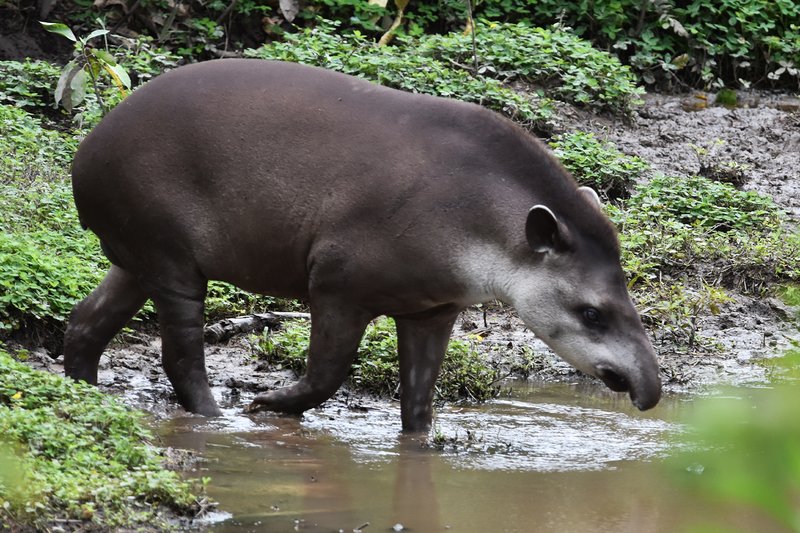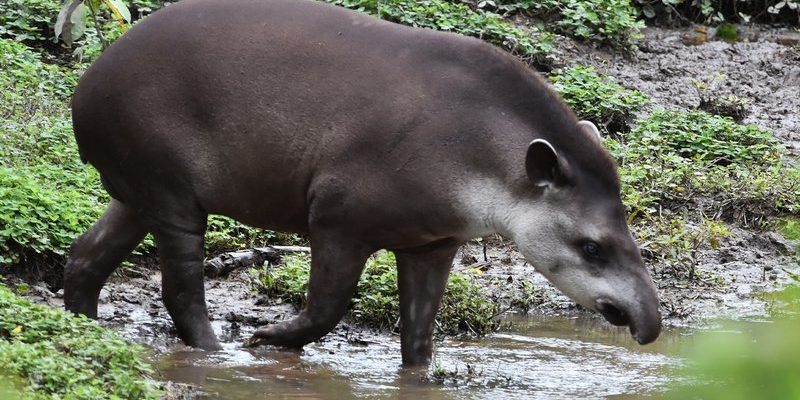
So, what do tapirs eat, and how do they manage to find their food? Well, let me explain! Tapirs are herbivores, which means their diet mainly consists of plants. They have some pretty cool hunting strategies, too, although it’s not what you might think—there’s no chasing down prey like a cheetah. Instead, their “hunting” involves foraging and a keen sense of smell. Curious yet? Let’s dive deeper into the diet and hunting strategies of the tapir.
Understanding the Tapir’s Habitat
To fully appreciate the tapir’s diet and hunting strategies, we first need to understand where they live. Tapirs thrive in various habitats, including tropical rainforests, wetlands, and even grasslands. Each species of tapir has its own preferred environment, but they all share a common need for areas rich in vegetation.
For instance, the Brazilian tapir is often found near rivers and floodplains, where dense foliage provides ample food and shelter. This environment is perfect for them because they can easily access water and a variety of plants. The tapir’s habitat plays a crucial role in its diet, as the foods available largely depend on the region’s climate and geography.
By living in these lush environments, tapirs can enjoy a diverse diet. They primarily eat leaves, fruits, and even some aquatic plants. It’s like their own personal buffet! Given their preference for dense vegetation, tapirs spend most of their time browsing for food. This unique habitat not only provides food but also helps keep them safe from predators.
The Tapir’s Diet: What They Eat
You might be wondering, “What exactly do tapirs munch on?” Well, tapirs are herbivores with a taste for a wide range of plant material. Their diet mainly consists of:
- Leaves: Tapirs love munching on the leaves of trees and shrubs. They have a particular fondness for tender, young leaves.
- Fruits: Depending on the season, they will feast on fruits like berries, apples, and even the occasional palm fruit.
- Grasses: In some regions, grass constitutes a significant portion of their diet. They enjoy grazing on the lush green stuff in open areas.
- Roots and aquatic plants: When near water sources, tapirs will also root around for aquatic plants, making sure to diversify their meals.
One of the fascinating aspects of tapirs is their ability to adapt their diet based on what’s available in their surroundings. For example, if they’re in a wetter area, they might eat more aquatic plants. In contrast, in drier regions, they’ll focus on tougher terrestrial plants. It’s their way of staying healthy and thriving in different environments.
How Tapirs Forage for Food
Now that we’ve explored their diet, let’s talk about how tapirs find their meals. Here’s the thing: tapirs are not exactly speed demons. Instead of sprinting after food, they take a more laid-back approach to foraging.
Tapirs rely heavily on their incredible sense of smell to locate food. Imagine a skilled chef sniffing out the freshest ingredients in a market—this is what tapirs do! They’ve got a keen nose that helps them identify ripe fruits and tender leaves, even from a distance. Once they find something tasty, tapirs use their flexible snouts to grab their food. This nose is like a versatile tool, allowing them to reach and pull down branches or pick fruits off trees.
You might also be curious about their foraging habits. Most tapirs are nocturnal, which means they do most of their feeding at night. This is an adaptation that helps them avoid predators like jaguars and pumas. During the day, you’ll find them resting in dense foliage or by a river—keeping a low profile until the sun goes down, and it’s time to explore.
The Tapir’s Role in the Ecosystem
Understanding the tapir’s diet and hunting strategies is vital, but what about their role in the ecosystem? Believe it or not, tapirs are essential players in their habitats. By feeding on various plants, they help maintain the balance of their ecosystems.
When tapirs eat fruits and vegetation, they inadvertently become a part of the plant’s reproductive process. As they move through the forest, they consume fruits and then disperse the seeds through their droppings. This helps promote the growth of new plants, creating an ongoing cycle of life in their environment.
Moreover, tapirs help shape their surroundings. By grazing on tall grasses and plants, they create openings in the vegetation, allowing sunlight to reach the ground. This encourages the growth of new plants and fosters biodiversity in their habitat. So, next time you think of a tapir, remember—they’re not just cute animals; they’re critical to the health of their ecosystems.
Common Threats to Tapirs
Unfortunately, tapirs face several threats that impact their survival. Habitat loss is a significant issue as forests are cleared for agriculture, urbanization, and other human activities. This not only reduces their available feeding grounds but also fragments their populations.
Additionally, tapirs are hunted for their meat and skin, which further endangers their numbers. Since tapirs are relatively slow and not particularly aggressive, they become easy targets for poachers. The combination of habitat loss and hunting creates a precarious situation for these unique animals.
Conservation efforts are underway to protect tapir populations, but it’s a challenging task. Awareness is key here. By learning about the tapir’s importance in the ecosystem, we can help advocate for their protection and support initiatives that aim to preserve their habitats.
So, there you have it! Tapirs may not be the first animals that come to mind when discussing wildlife, but their diet and hunting strategies are worth exploring. They play a vital role in their ecosystems and are fascinating creatures in their own right.
Understanding the tapir’s diet and foraging habits helps us appreciate their significance in nature. By being aware of the threats they face, we can be more proactive in conservation efforts. Next time you see a photo or hear about a tapir, you’ll know just how incredible and important these gentle giants are—like nature’s well-kept secret waiting to be shared.

